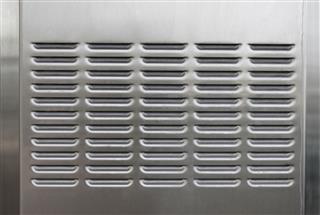
Malleability refers to the property by which metals can be shaped into thin sheets by beating them with a hammer. This property makes metals quite useful in terms of its use in various scientific applications. This ScienceStruck post explains the concept of malleability in science with the help of examples.
To speed up the process of shaping or molding metallic elements, heat can be applied to them. Heat brings about flexibility in the placement of these molecules, thus, resulting in speeding up the molding process.
Have you ever wondered why some elements deform on application of stress, while others don’t? The property responsible for this behavior is malleability. It defines how every element reacts under pressure. Every element has unique properties and structures. While some are brittle, others can be easily shaped into a desired figure.
Whenever physical changes are done to the metals, like force or pressure is applied to them, they get distorted. In other words, the dimensions or the shape of the object is changed. In the process of beating the metal to shape it into thin foils, its molecules get compressed to a very high extent. The only shortcoming of this process is that no metal or element is completely malleable. The degree of its malleability needs to be improved by using chemical processes.
▶ Consider the example of gold to understand the concept of malleability. Platinum stands after gold and silver for its value of malleability. It can be shaped as desired for use in making jewelry.
▶ Consider another example of aluminum. It can be hammered into thin foils, which are used in wrapping food items. This metal can also be shaped to be used in making cooking utensils.
Definition of Malleability
Malleability is a property that mostly metals exhibit. It implies that they can readily be hammered into thin sheets. Elements that are brittle or not strong enough will readily break into pieces on applying force. This property is basically the ability of metals to be shaped or stretched depending on the amount of force applied. During this process, metals can be elongated or remolded. They can also be shaped in a number of ways to make tools and devices.
The molecules in the structure of metals are closely packed. When the metal is hammered, the molecules move away due to the force and pressure. However, the molecules do not separate from each other.
Examples of Metals
- Lithium
- Indium
- Tin
Advantages
▶ This property is most essential in various applications in the branch of science. Not only that, it finds a variety of applications in everyday life too. Consider a metal spoon. It doesn’t bend on breaking.
▶ The objects bearing this property can be shaped to be used in various electronic circuits or ornaments. Besides this, another scenario wherein this concept is used is, curve-shaped metals employed in automobiles.
▶ Even if an element is hammered, its chemical composition doesn’t change in any way.
Disadvantages
▶ It is very difficult to obtain metals or elements that are completely malleable. This either demands that an element be modified to become malleable or a metal to be produced using artificial methods. Because only when the element is strong enough can it be beaten into desired shapes.
▶ Grains of metals are closely packed. Metals are known to crack at their boundaries. Those elements having large number of grain boundaries tend to break when stressed, and thus, they do not exhibit the property of malleability.
We saw that most metals exhibit this property, and that is the reason why gold, silver, or platinum can be hammered into thin sheets. But if you consider the metal titanium, it breaks into pieces when tried to hammer. Besides titanium, antimony and bismuth break when exposed to sheer stress. Thus, they can be considered as exceptions to the rule that metals are malleable.
















